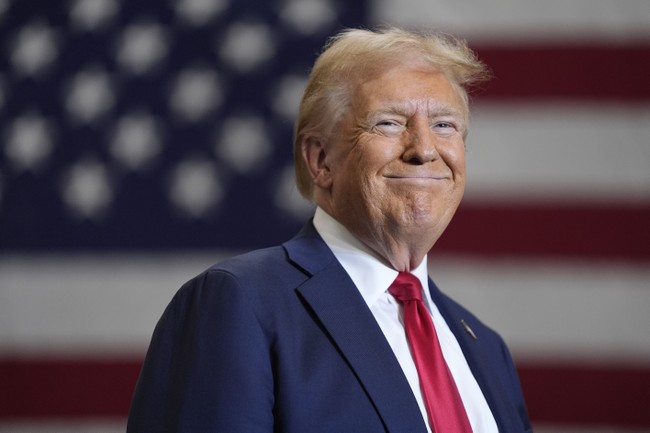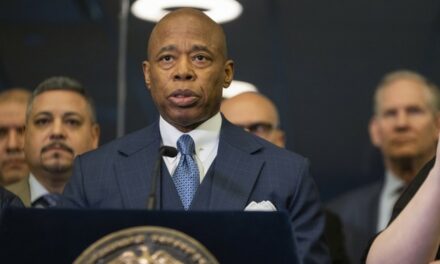We support our Publishers and Content Creators. You can view this story on their website by CLICKING HERE.

The general election is exactly one month away, and it’s still a nail-biter if we are to believe the polling. This race is likely to remain a nail-biter, although why is a bit of a mystery, given the many and varied weaknesses of the Democratic ticket; but for many decades now, the hardcore party faithful have been pretty consistent in making up, each, about a third of the electorate. About a third of the voters will vote Democratic if the candidate is a stuffed armadillo, and about a third will vote Republican if the candidate is a dead woodchuck. That’s the political reality we deal with. Interestingly, this ratio has stayed pretty constant, even though the political parties themselves have changed. My Dad described himself as a Truman Democrat, but Harry “The Buck Stops Here” Truman wouldn’t recognize today’s Democratic Party.
Advertisement
The GOP has likewise changed, and in the last eight years, there has been a considerable transformation, due in large part to one person: Donald John Trump. Whether he wins or loses the 2024 election, of course, sooner or later the Age of Trump will end. Which brings up an interesting question: What will a post-Trump Republican party look like? In a Saturday article, the Washington Examiner’s Sarah Bedford has some interesting speculations about that:
As the 2024 election rapidly approaches, a familiar debate is on the horizon: the future of a post-Trump GOP.
Whether that point remains a blurry dot more than four years in the future or an imminent battle to be waged just months from now depends on one’s confidence in a Trump victory next month.
But the reality is that the party will eventually have to face a future without the man who has been its center of gravity for nearly a decade, as well as the question of what to do with the movement he created.
“There will be a sort of concerted push from GOP elites to try to reestablish a Republican establishment that’s conducive to their interests,” Duncan Braid, coalitions director at American Compass, told the Washington Examiner. “I don’t think that they will be successful, largely because the voters have changed so much.”
Advertisement
There’s an interesting point there; political parties rarely, if ever, return to an earlier state. The America-first populism that Trump, for better or for worse, has championed has changed the GOP forever. Populism and America-first are now animating principles of the Grand Old Party, and the young Turks of the party have largely embraced these ideas. But the Examiner piece names a couple of interesting specifics.
Social issues: The fight over same-sex marriage is essentially over, thanks in no small part to a Supreme Court decision. Abortion still is and will remain a hot issue on both sides. But the Republican party is now focused on reacting to a couple of particular strains of lunacy:
“In 2028, I think the most likely situation is that the culture war will look very similar to where it’s at now,” (Terry Schilling, president of the American Principles Project) said. “I think that the Republicans will still be supporting the protection of children and their innocence, and that goes for women’s sports, sexual procedures, and getting this junk out of schools.”
This is likely to be the social issue fight for the next decade or so. But the biggest thing Trump’s movement has done is to change what makes up the base of the Republican Party:
Trump accelerated a political realignment that saw the GOP become more multicultural, blue collar, and male dominated than it had been in years. The Democratic Party became decidedly more elite over the same period, aligning itself with corporate America and highly educated, highly credentialed voters.
Despite its leftward lurch on identity politics, the Democratic Party has become whiter and more concentrated in cities and the affluent suburbs that surround them. Trump’s GOP, by contrast, has made gains with black and Hispanic voters not seen in decades.
“Mr. Trump’s tallies today — 14 percent support among Black voters and 41 percent among Hispanic voters — would still represent the highest level of backing a Republican presidential candidate has received in pre-election polls since the enactment of the Civil Rights Act in 1964,” New York Times analyst Nate Cohn noted last month.
Advertisement
This, of course, wasn’t all Trump. This realignment started with Ronald Reagan and continued through a couple of false starts, like “compassionate conservatism” and a few other flashes in the pan. The GOP has, as someone once said, gone from the “country club Republican party” to the “Sam’s Club Republican party.” And that’s where the parties are now; the Republicans are the party of blue-collar workers, of small businessmen, of the rural and small-town cohorts; the Democrats are and will remain the party of wealthy coastal elites, Marxist activists, academics, and the dependency class. Trump didn’t make things this way; he did recognize what was happening and attempted to address it.
See Related: Harris Campaign to Ramp Up Negative Ads Attacking Trump. Will It Work?
‘You Got Guts’: Decorated Vietnam Vet Gives Remarkable ‘Small Token’ to Trump in Pennsylvania
And that’s liable to be where things stay for the next few election cycles. But the one premise missed in this piece is the cause-effect chain; it’s near-certain that Donald Trump did not start this process, this evolution of the GOP to a more populist, America-first party. As noted, the seeds of it were planted by Ronald Reagan. Donald Trump grabbed this bull by the horns and has been largely controlling it, but sooner or later the Republicans will face a Trump-free future. The immediate future will see current trends continue, and unless I miss my guess, the GOP will continue to make inroads into some non-traditional constituencies – Hispanics, in particular, many of whom are blue-collar workers and who tend to be rather socially conservative.
Advertisement
Donald Trump has been and will continue to be a huge figure in American politics for some time to come. The movement he challenged and rode into the White House once and, with a bit of luck, will again, that America-first populism, will continue to drive Republicans to the polls. For now.
A decade from now? A century from now? That’s anyone’s guess. Let’s just hope there will still be an American republic around to witness whatever comes next.

 Conservative
Conservative  Search
Search Trending
Trending Current News
Current News 





